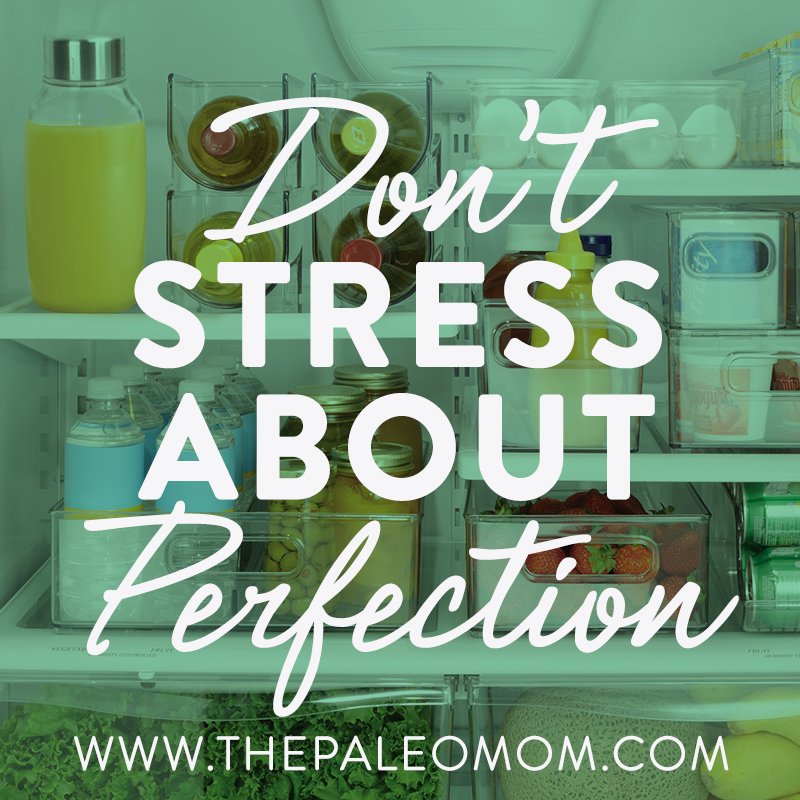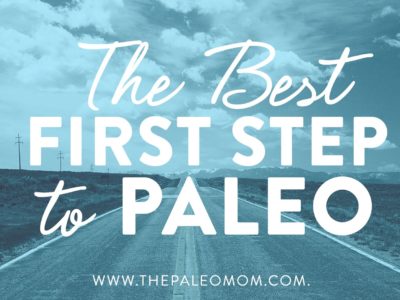I spend quite a bit of time writing about strategies for transitioning to a Paleo template, often in answer your questions! I also know first hand how daunting the idea of ditching the Standard American Diet for a Paleo one can be—I traveled the same path myself nearly 6 years ago. Depending on how our diets look before this transition, it can feel like a real uphill climb.
Table of Contents[Hide][Show]
But, I’m also very passionate about dispelling the myth that Paleo, or even the Autoimmune Protocol, is “hard.” Does it take a shift in mindset and a set of new habits to make sustainable? Absolutely. But I reject the idea that making what is arguably the best choice we possibly can for the health of our families is difficult. After 5 1/2 years of Paleo, I’ve collected a set of strategies to make this transition as smooth as possible, tested by many of my family members, friends and readers (for more, see Transitions: All In or Baby Steps? and “I Want to Eat Paleo But Don’t Know Where to Start!”).
That’s good news, because I want to share as many of these strategies with you as possible! In this post, I’m going to tackle the question “where do I start?” You’ll see varying answers to this question across the internet, but for me, the answer is pretty unsurprising: it all starts with veggies!
Start With Veggies
 As you might expect, I think the best first step toward Paleo is to focus on nutrient density. The simplest way we can approach this strategy is by reframing the way we think about meals.
As you might expect, I think the best first step toward Paleo is to focus on nutrient density. The simplest way we can approach this strategy is by reframing the way we think about meals.
Looking around the internet for “Paleo recipes” can yield a huge range of complicated recreations of our favorite Standard American meals. Sure, we can spend our time making Paleo treats, pizzas and sandwiches. Some of these foods may even get us through times when we’re craving less-than-ideal options. I’m not anti these types of recipes, but I also don’t see them as being the best first step to Paleo.
Instead of trying to outdo the internet with complicated meals, think simply. Our plates should consist of protein (about ¼ to ⅓ of our plate) and the rest should consist of veggies, in as many colors and iterations as you can possibly manage.
That. Is. It.
This strategy is beautifully simple for so many reasons. First, it ensures we’re getting a nutrient dense variety of vegetables that our bodies need. Shooting for an ultimate goal of 8-14 servings of veggies a day will likely result in our getting as much as nutrition as possible from our diets (see The Importance of Vegetables, The Importance of Nutrient Density and 3 Reasons to Eat Your Veggies).
Second, that lofty goal of at least 8 servings doesn’t leave much room for grains, legumes, dairy or other “gray area” foods. It’s a natural way to keep the questionable stuff off your plate until you know what feels best for your body and begin to add some of these things back in (see Gray Area Foods and How To Cheat and Stay On Track).
Keep it simple, and you’ll be surprised how satisfying this strategy can be!
Eliminate Gluten
 Gluten is one of the biggest triggers of autoimmune symptoms and digestive stress in our modern diets (see Why Grains are Bad, Pt. 1 – Lectins and the Gut, What Is a Leaky Gut (and How Can It Cause So Many Health Issues?), and The Link Between Gluten and Obesity). If you’re exploring Paleo, this shouldn’t be a novel concept.
Gluten is one of the biggest triggers of autoimmune symptoms and digestive stress in our modern diets (see Why Grains are Bad, Pt. 1 – Lectins and the Gut, What Is a Leaky Gut (and How Can It Cause So Many Health Issues?), and The Link Between Gluten and Obesity). If you’re exploring Paleo, this shouldn’t be a novel concept.
The idea that gluten could be harmful for more than just celiacs has been gaining traction lately, with studies confirming the existence of non-celiac gluten sensitivity, the ability for gluten to damage cells lining our guts, and a link between gluten exposure and leaky gut in susceptible individuals. See Gluten Cross-Reactivity: How your body can still think you’re eating gluten even after giving it up.
Nutrivore Weekly Serving Matrix
An easy-to-use and flexible weekly checklist
to help you maximize nutrient-density.
The Weekly Serving Matrix is very helpful! I’ve been eating along these lines but this really helps me know where to focus vs. which foods serve a more secondary role. It’s super helpful and has taken a lot of worry out of my meal planning. Thanks!
Jan
For many of us, pulling gluten out our diets can resolve a whole host of issues not just in our digestion, but in other areas linked to gut health—mental health, skin and joint issues, thyroid problems, fatigue and so much more. Going gluten-free often produces immediate and noticeable results, one thing many of us need to stay motivated in our journey toward a healthier diet.
I often tell people the best first step toward a Paleo lifestyle is simply focusing on meat and veggies. That’s due in part to the fact that this strategy often means a reduction or complete elimination of our consumption of grains, especially gluten. But if you’re not seeing results and are becoming discouraged, eliminating gluten is a worthy additional step.
If you only eliminate one thing from your diet at the beginning of your Paleo journey (while of course focusing on adding IN more nutrient dense options) make it gluten. For a complete list of gluten-containing ingredients, see How to Avoid Wheat and Gluten
Don’t Stress About “Perfection”
 However we choose to approach a dietary change, the best thing we can do is remember there’s no “wrong” way to make healthy changes. An article like this one (and for that matter, a site like mine!) can give you plenty of tips to smooth your transition, but they’re only effective if they don’t drive you toward feelings of inadequacy or make you feel that you’re not “doing Paleo right.”
However we choose to approach a dietary change, the best thing we can do is remember there’s no “wrong” way to make healthy changes. An article like this one (and for that matter, a site like mine!) can give you plenty of tips to smooth your transition, but they’re only effective if they don’t drive you toward feelings of inadequacy or make you feel that you’re not “doing Paleo right.”
Ultimately, the goal of adopting a Paleo template is to eat the most nutrient-dense foods possible. I’d even say that the goal is to do that on a regular, sustainable basis, so that your nutritional choices are consistent and you learn how to fuel your body in a way that minimizes inflammation.
But, a “sustainable basis” might mean slowly easing into your diet so we don’t miss our favorites and get burned out. It might mean taking one step at a time and relishing small improvements. That is all okay!
Above all, Paleo should become a long-term lifestyle. Your first steps don’t have to be perfect, as long as you start.











